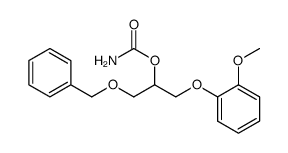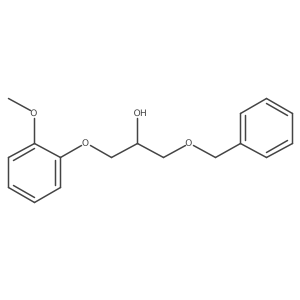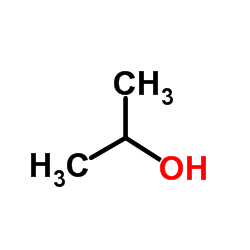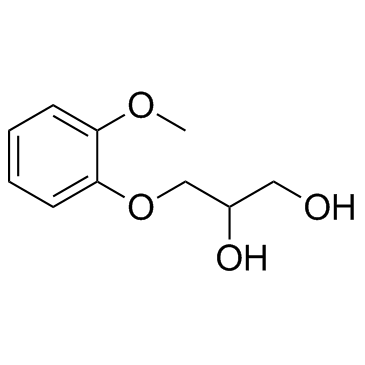532-03-6
| Name | Methocarbamol |
|---|---|
| Synonyms |
Guaiacol glyceryl ether carbamate
neuraxin Relax Methyocarbamol Delaxin 2-hydroxy-3-{[2-(methyloxy)phenyl]oxy}propyl carbamate Relestrid Carbamic Acid 2-Hydroxy-3-(2-methoxyphenoxy)propyl Ester guaifenesin carbamate EINECS 208-524-3 2-Hydroxy-3-(2-methoxyphenoxy)propyl carbamate Lumirelax Miolaxene Robaxan Perilax MFCD00057662 methocarbamol Robamol AHR 85 Traumacut Miowas Robaxin 1,2-Propanediol, 3-(2-methoxyphenoxy)-, 1-carbamate Avetil |
| Description | Methocarbamol is a central muscle relaxant used to treat skeletal muscle spasms.Target: Carbonic AnhydraseMethocarbamol is the carbamate of guaifenesin, but does not produce guaifenesin as a metabolite, because the carbamate bond is not hydrolyzed metabolically; metabolism is by Phase I ring hydroxylation and O-demethylation, followed by Phase II conjugation. All the major metabolites are unhydrolyzed carbamates. Methocarbamol is used as an adjunct in the symptomatic treatment of musculoskeletal conditions associated with painful muscle spasm [1, 2]. |
|---|---|
| Related Catalog | |
| References |
| Density | 1.3±0.1 g/cm3 |
|---|---|
| Boiling Point | 472.5±40.0 °C at 760 mmHg |
| Melting Point | 95-97ºC |
| Molecular Formula | C11H15NO5 |
| Molecular Weight | 241.240 |
| Flash Point | 239.6±27.3 °C |
| Exact Mass | 241.095016 |
| PSA | 91.01000 |
| LogP | 0.55 |
| Vapour Pressure | 0.0±1.2 mmHg at 25°C |
| Index of Refraction | 1.541 |
| Storage condition | -20°C Freezer |
CHEMICAL IDENTIFICATION
HEALTH HAZARD DATAACUTE TOXICITY DATA
|
| Symbol |


GHS07, GHS08 |
|---|---|
| Signal Word | Danger |
| Hazard Statements | H302-H317-H334 |
| Precautionary Statements | P261-P280-P284-P304 + P340-P333 + P313-P342 + P311 |
| Personal Protective Equipment | dust mask type N95 (US);Eyeshields;Faceshields;Gloves |
| Hazard Codes | Xn:Harmful |
| Risk Phrases | R22;R42/43 |
| Safety Phrases | S36 |
| RIDADR | NONH for all modes of transport |
| WGK Germany | 3 |
| RTECS | TY8750000 |
| HS Code | 2924299090 |
|
~% 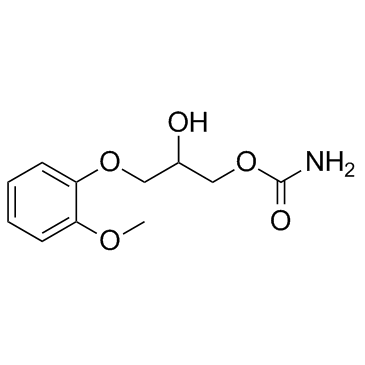
532-03-6 |
| Literature: Monatshefte fuer Chemie, , vol. 94, p. 339 - 358 |
|
~% 
532-03-6 |
| Literature: Monatshefte fuer Chemie, , vol. 94, p. 339 - 358 |
|
~% 
532-03-6 |
| Literature: Monatshefte fuer Chemie, , vol. 94, p. 339 - 358 |
|
~% 
532-03-6 |
| Literature: Monatshefte fuer Chemie, , vol. 94, p. 339 - 358 |
|
~% 
532-03-6 |
| Literature: Monatshefte fuer Chemie, , vol. 94, p. 339 - 358 |
|
~% 
532-03-6 |
| Literature: Monatshefte fuer Chemie, , vol. 94, p. 339 - 358 |
|
~% 
532-03-6 |
| Literature: Yakugaku Zasshi, , vol. 76, p. 880 Chem.Abstr., , p. 2625 US2770649 , ; DE1018412 , ; |
|
~% 
532-03-6 |
| Literature: Monatshefte fuer Chemie, , vol. 94, p. 339 - 358 |
|
~% 
532-03-6
Detail
|
| Literature: Journal of Organic Chemistry, , vol. 22, p. 1595,1598 |
| Precursor 4 | |
|---|---|
| DownStream 3 | |
| HS Code | 2924299090 |
|---|---|
| Summary | 2924299090. other cyclic amides (including cyclic carbamates) and their derivatives; salts thereof. VAT:17.0%. Tax rebate rate:13.0%. . MFN tariff:6.5%. General tariff:30.0% |


